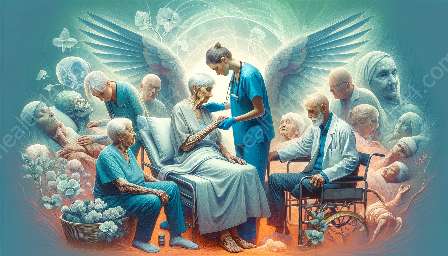Geriatric rehabilitation is a specialized area of healthcare that focuses on the rehabilitation of older adults, addressing the unique health challenges that come with aging. Patient education plays a crucial role in geriatric rehabilitation, as it empowers patients to take an active role in their recovery and promotes better health outcomes.
Understanding the Aging Process
One of the key components of patient education in geriatric rehabilitation is helping older adults understand the natural aging process. As individuals age, their bodies undergo various physiological changes, which can impact their mobility, strength, balance, and overall functional independence. By providing education about these age-related changes, healthcare providers can help patients develop realistic expectations regarding their rehabilitation and set attainable goals for their recovery.
Promoting Wellness and Preventing Complications
Education aimed at promoting wellness and preventing complications is essential in geriatric rehabilitation. Patients are educated on strategies to maintain a healthy lifestyle, including proper nutrition, regular physical activity, and fall prevention techniques. Additionally, they receive guidance on managing chronic conditions, understanding medication regimens, and recognizing warning signs that require immediate medical attention. By empowering older adults with this knowledge, healthcare providers can support them in avoiding common health issues and minimizing the risk of functional decline.
Enhancing Functional Independence
Patient education is instrumental in enhancing functional independence among older adults participating in geriatric rehabilitation. Through targeted education and training programs, patients learn techniques to improve their mobility, perform activities of daily living, and manage assistive devices, if needed. By equipping older adults with the necessary knowledge and skills, healthcare professionals enable them to regain confidence in their abilities and strive for greater independence in their daily lives.
Building Strong Support Networks
In addition to individual patient education, geriatric rehabilitation often involves educating family members and caregivers about the specific needs of older adults. By helping family members understand how to best support their loved ones during the rehabilitation process, healthcare providers can create a supportive network that contributes to the overall well-being of the patient.
Embracing Multidisciplinary Collaboration
Successful patient education in geriatric rehabilitation relies on a multidisciplinary approach, involving different healthcare professionals working collaboratively to address the complex needs of older adults. This collaborative effort ensures that patients receive comprehensive education tailored to their specific conditions, incorporating input from physiotherapists, occupational therapists, speech therapists, nutritionists, and social workers.
Utilizing Technology and Innovation
Advancements in technology have significantly expanded the possibilities for patient education in geriatric rehabilitation. Telemedicine, mobile health applications, virtual reality simulations, and other innovative tools offer new avenues for educating older adults about their conditions, treatment options, and self-care strategies. Integrating these technological solutions into geriatric rehabilitation programs allows for increased accessibility and personalized education experiences for patients.
Measuring the Impact of Patient Education
Effectively evaluating the impact of patient education in geriatric rehabilitation is essential for continuously improving the education delivery and ensuring positive outcomes. Healthcare providers can utilize outcome measures, patient-reported assessments, and feedback mechanisms to gauge the effectiveness of educational interventions, identify areas for improvement, and tailor education plans to meet the evolving needs of older adults.
Conclusion
In conclusion, patient education plays a pivotal role in geriatric rehabilitation by empowering older adults with the knowledge and skills needed to actively participate in their recovery process. By addressing the unique needs of older adults and providing comprehensive education, healthcare providers can support older adults in maintaining their functional independence, preventing complications, and promoting overall wellness. Embracing innovative approaches and collaborating across disciplines further enhances the impact of patient education, ultimately contributing to improved outcomes and enhanced quality of life for older adults undergoing rehabilitation.


